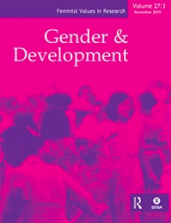‘I don’t care about their reactions’: agency and ICTs in women’s empowerment in Afghanistan

Overview
Gender justice and women’s empowerment are both an end and a goal of sustainable development, and information and communication technology for development (ICT4D) policies and monitoring needs to be informed by this understanding. This article draws on research from Afghanistan exploring how women’s empowerment is conceptualised in relation to information and communication technologies (ICTs) currently, and how ICTs are used in processes intended to support empowerment. Our research shows that women in Afghanistan have high hopes that ICTs will be enabling and empowering. Yet the majority of women’s ICT activities do not realise that vision; with a few exceptions around women’s health, ICTs usually only enable women to meet their existing needs, and do not enable them to challenge patriarchal power relations. According to our respondents, using ICT for purposes that challenge patriarchy – e.g. using the internet to learn about rights to divorce or citizen’s rights, or sharing ‘private’ stories of abuse in social media spaces – has a high risk of social repercussions. We argue that these warnings and responses urge women to conform, and submit to control, and regulate women’s interactions and movements. They limit women’s choices, options, and power. However, some Afghan women in our research rejected these attempts to control and regulate – ‘I don’t care about their reactions’. This offers hope that for some individuals in some contexts, ICTs can put a dent in patriarchal power, supporting and furthering women’s empowerment.
Keywords
Additional details
Author(s)
How to cite this resource
Citation styles vary so we recommend you check what is appropriate for your context. You may choose to cite Oxfam resources as follows:
Author(s)/Editor(s). (Year of publication). Title and sub-title. Place of publication: name of publisher. DOI (where available). URL
Our FAQs page has some examples of this approach.
Beyond Aid in Ghana

Intersectional Feminism: A Primer

Towards Gender-Transformative Action on Super Pollutants

